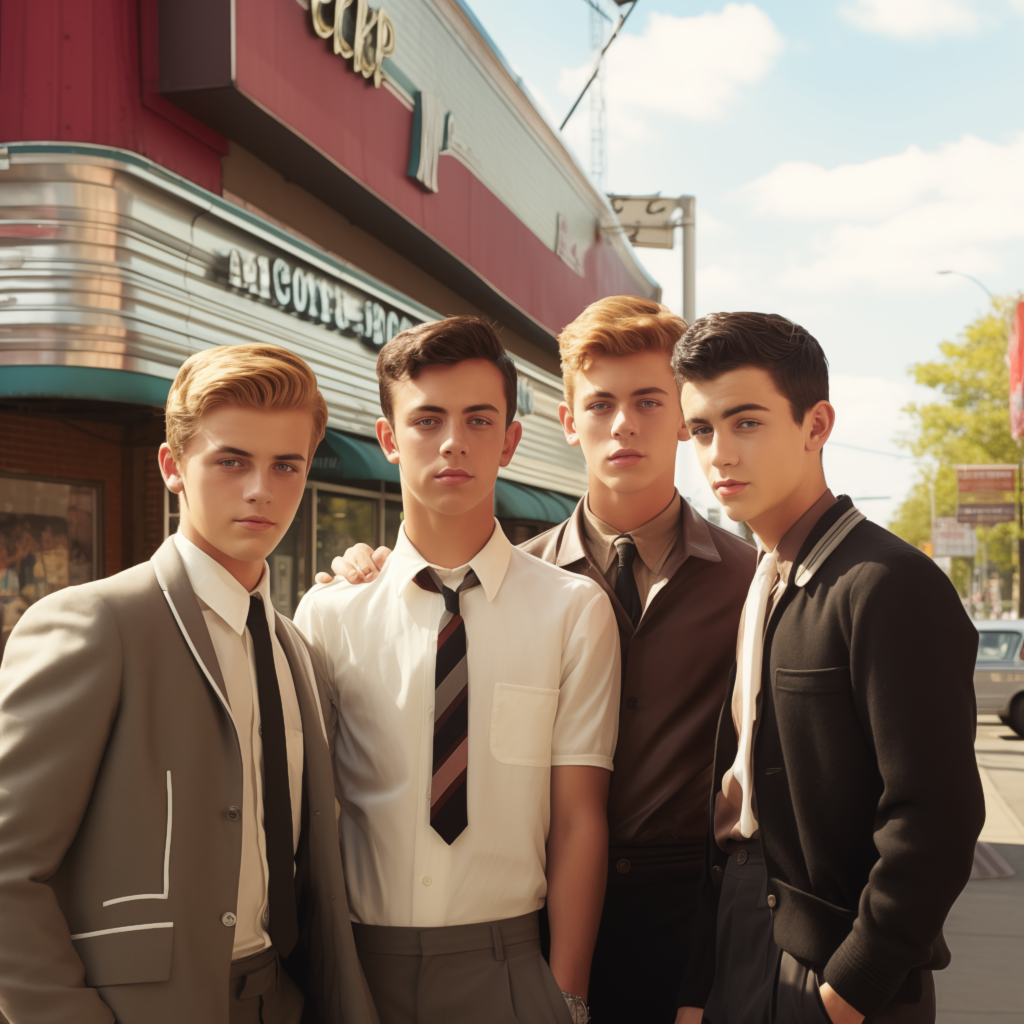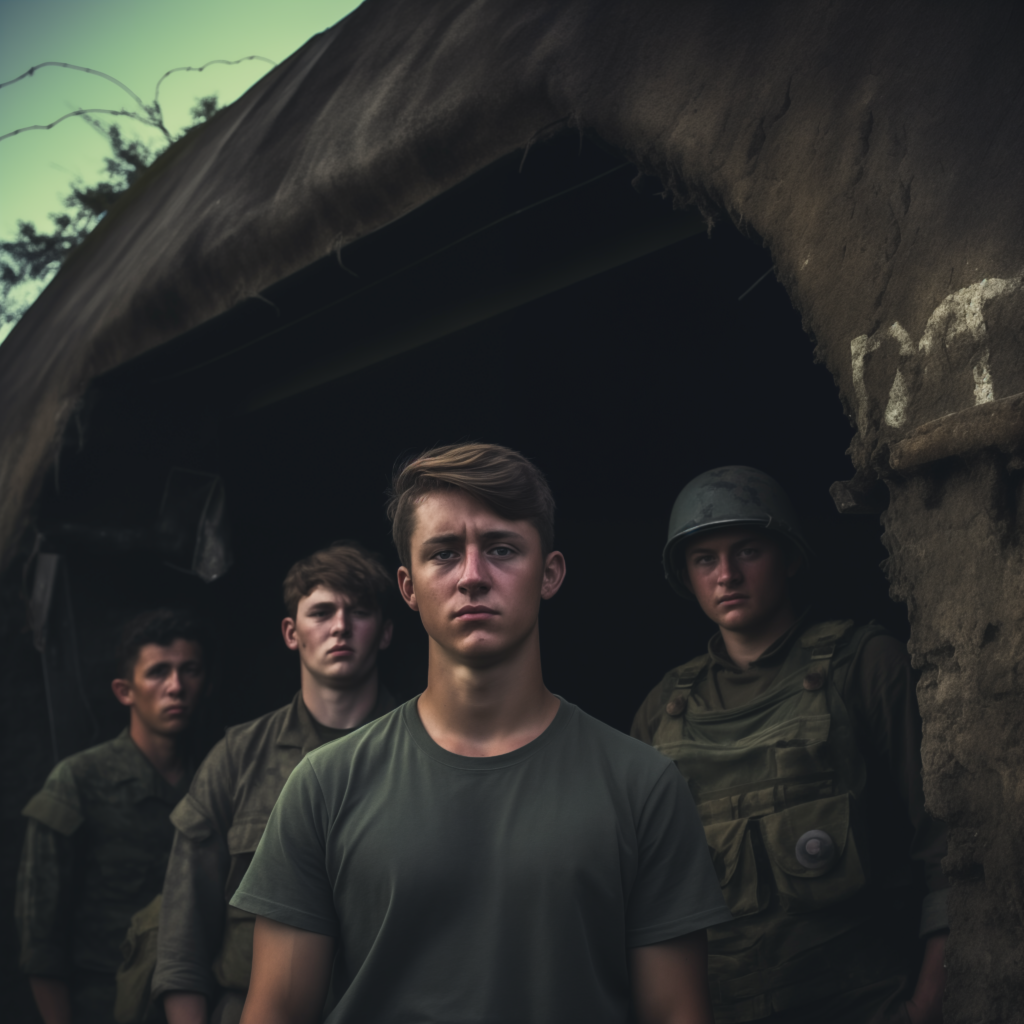
Big Shoes to Fill
The American G.I. of the Vietnam era had big shoes to fill. They were the sons and daughters of the “Greatest Generation.”
They had grown up in 1950s America, where gathering around the family radio for news, playing board games, riding bikes, and playing toy soldiers were average pastimes. Their parents and grandparents still reveled in the patriotic glory that enveloped the United States during and after World War II.
And they still held a profound fear and hatred of communism.
Enemy #1: Communism

Communism as an enemy of the United States became a prevalent issue in the early 1950s during the Truman administration as they attempted to root out communism amongst America’s government ranks.
The unrest in Korea also consumed this period with a clear tie-in to our fight against communism. President Truman stated that the Korean invasion was “very obviously inspired by the Soviet Union.” Which, in turn, made it morally unavoidable for America to get involved in that conflict.
But, after three years, unlike the victories of World War II, the Korean War ended in stalemate and the senseless loss of over 36,000 American service members.
We had not lost the war but had not won it either.
As future Vietnam service members enjoyed their middle school and high school years without war, the fear of communism never ceased. America had instilled fear in the world, and even within its own borders after the atomic bombs were dropped on Hiroshima and Nagasaki.
That, along with the development of hydrogen bombs in 1952, made the survival of any nuclear war apparently impossible.
Unease was set upon the world, and in America during the 1950s and 60s, America’s youth practiced “Duck and Cover” drills in schools. World wars were no longer between soldiers on distant battlefields; now, civilians were at risk in their homes and schools. Vietnam service members had been born into the Cold War.
The Vietnam War

In the background of their lives had always been the Vietnam War, a conflict with roots as far back as the 1800s, although historians say it officially began in the 1950s.
For many years, American military advisors had boots on the ground in Vietnam, but it wasn’t until the Marine Corps entered Da Nang in March of 1965 that the U.S. officially had troops deployed to fight in the conflict beyond an advisory role.
In the following decade, young Americans, 18-, 19-, and 20-year-olds, were called to the fight. Many were inspired and determined to fight communism regardless of where it was in the world.
It was the first conflict witnessed daily on living room televisions across America.
In the beginning, and until the Tet Offensive of 1968, most Americans supported the war effort. But by 1970, the tide of sentiment had turned. Most Americans were tired of the war and believed deploying troops to Vietnam was a mistake.
Sadly, there was no way to take back the tremendous number of American lives lost in the conflict.
The ’Nam
Nearly 3 million Americans had been stationed in Vietnam at some point during the conflict. In April of 1969, the American combat troop count in Vietnam peaked at 543,000.
In the end, more than 58,000 American lives were lost. Just like the Korean War, there were no winners.
During the Vietnam War, a typical tour of duty was one year for enlisted men and six months for officers. The Marines and the Navy were assigned 13-month tours, while the special forces served six months. Extending or renewing a tour of duty was rare.
These American soldiers, airmen, Marines, and corpsmen had grown up seeing the American military as heroes. It was the American military who brought down the original Axis of Evil and saved the world from the Third Reich. They remembered the parades, the flags, the confetti.
But, upon their own return home, they found indifference.
The World
Back in the rest of the world, things had changed – drastically.
Returning service members were not the heroes they remembered. Instead, they were treated with hostility. The American people had turned their back on the war, and in turn, they had turned their back on America’s troops.
The war had been brutal, as all wars are. But, for the first time in American history, the public blamed the troops and the government. The sacrifices and loss of American service members were never acknowledged or appreciated. Many who returned kept their service experience a secret when applying for jobs or meeting new people. The horrors of war were internalized. In hindsight, it was a most dreadful and misguided mistake of the American people.
The Losses1
More than 58,000 were dead.
Out of those killed, 61% were younger than 21 years old. 11,465 of those killed were younger than 20 years old.
Those who lived included more than 75,000 severely disabled.
5,283 limbs lost. 1,081 multiple amputations.
The average age of the men killed was 23.1 years.
In The End1
Vietnam veterans represented 9.7% of their generation.
Of those who served, 97% were honorably discharged, with 85% making successful transitions into civilian life.
91% of those polled say they are glad they served.
74% say they would serve again, even knowing the outcome.
_______________________
1. Source: uswings.com